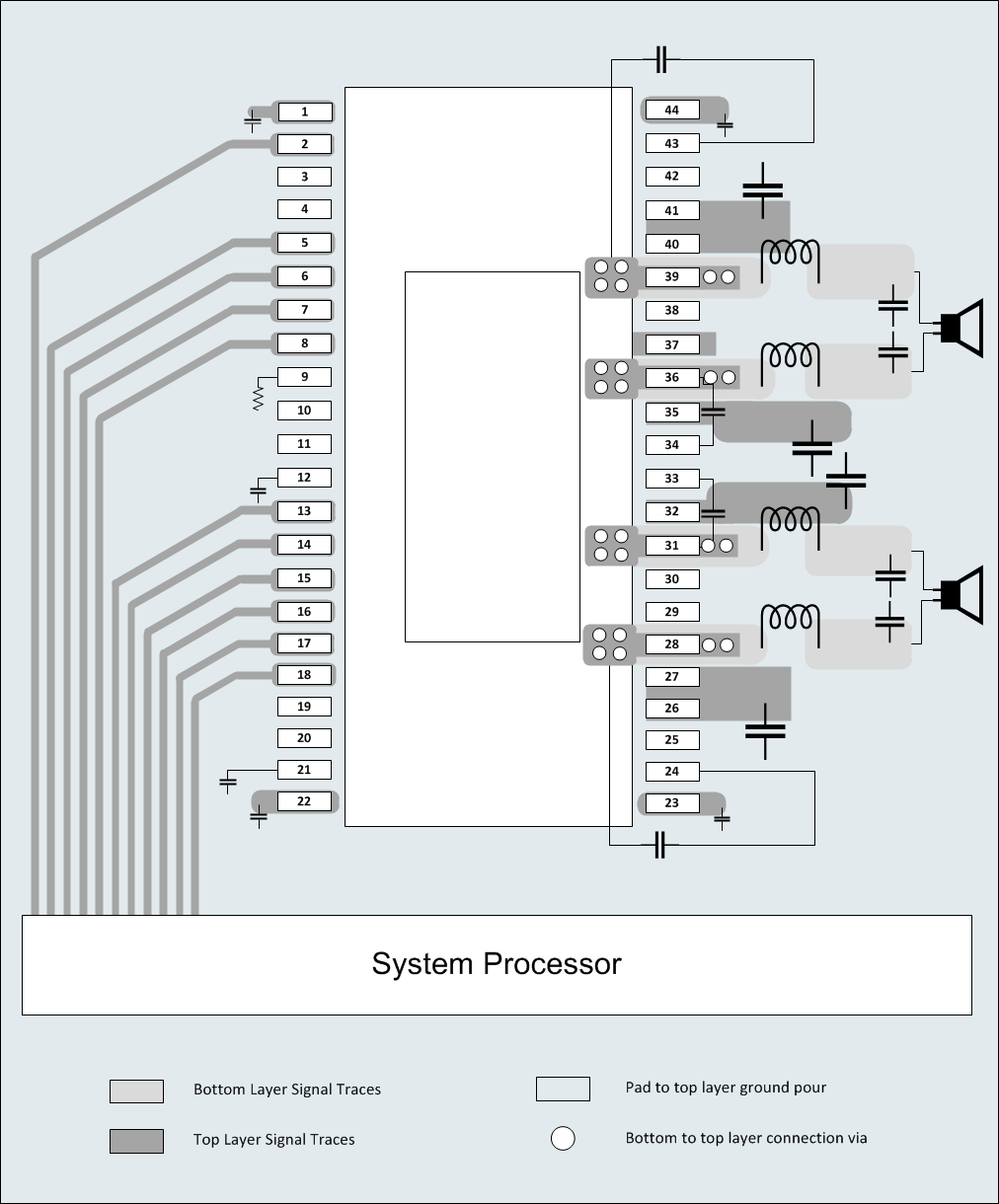SLAS623A November 2008 – November 2016 TAS5342A
PRODUCTION DATA.
- 1 Features
- 2 Applications
- 3 Description
- 4 Revision History
- 5 Pin Configuration and Functions
- 6 Specifications
-
7 Detailed Description
- 7.1 Overview
- 7.2 Functional Block Diagram
- 7.3
Feature Description
- 7.3.1 Mid Z Sequence Compatibility
- 7.3.2 Device Protection System
- 7.3.3 Use Of TAS5342A In High-Modulation-Index Capable Systems
- 7.3.4 Overcurrent (OC) Protection With Current Limiting and Overload Detection
- 7.3.5 Pin-To-Pin Short Circuit Protection System (PPSC)
- 7.3.6 Overtemperature Protection
- 7.3.7 Undervoltage Protection (UVP) and Power-On Reset (POR)
- 7.3.8 Error Reporting
- 7.3.9 Device Reset
- 7.4 Device Functional Modes
- 8 Application and Implementation
- 9 Power Supply Recommendations
- 10Layout
- 11Device and Documentation Support
- 12Mechanical, Packaging, and Orderable Information
Package Options
Mechanical Data (Package|Pins)
- DDV|44
Thermal pad, mechanical data (Package|Pins)
- DDV|44
Orderable Information
10 Layout
10.1 Layout Guidelines
- Use an unbroken ground plane to have good low impedance and inductance return path to the power supply for power and audio signals.
- Maintain a contiguous ground plane from the ground pins to the PCB area surrounding the device for as many of the ground pins as possible, since the ground pins are the best conductors of heat in the package.
- PCB layout, audio performance and EMI are linked closely together.
- Routing the audio input should be kept short and together with the accompanied audio source ground.
- The small bypass capacitors on the PVDD lines of the DUT be placed as close the PVDD pins as possible.
- A local ground area underneath the device is important to keep solid to minimize ground bounce.
- Orient the passive component so that the narrow end of the passive component is facing the TAS5342A device, unless the area between two pads of a passive component is large enough to allow copper to flow between the two pads.
- Avoid placing other heat producing components or structures near the TAS5342A device.
- Avoid cutting off the flow of heat from the TAS5342A device to the surrounding ground areas with traces or via strings, especially on output side of device.
10.2 Layout Example
 Figure 20. Example Layout
Figure 20. Example Layout